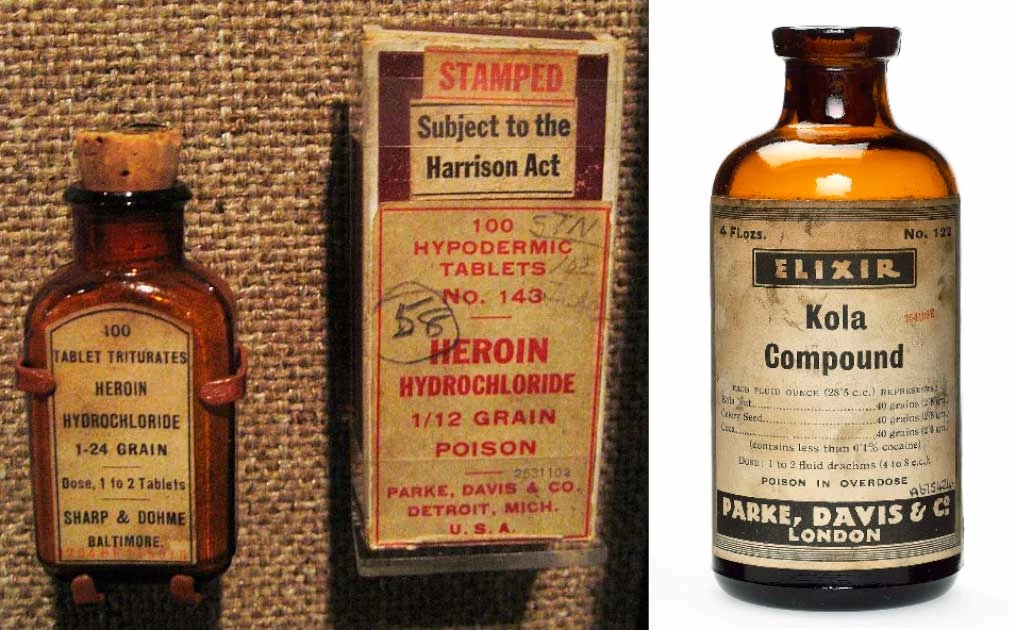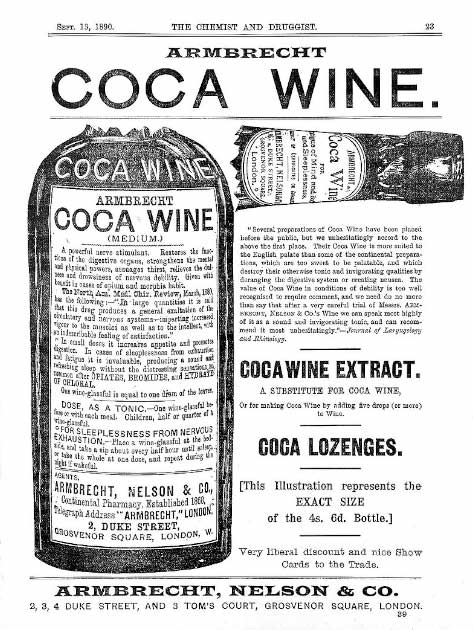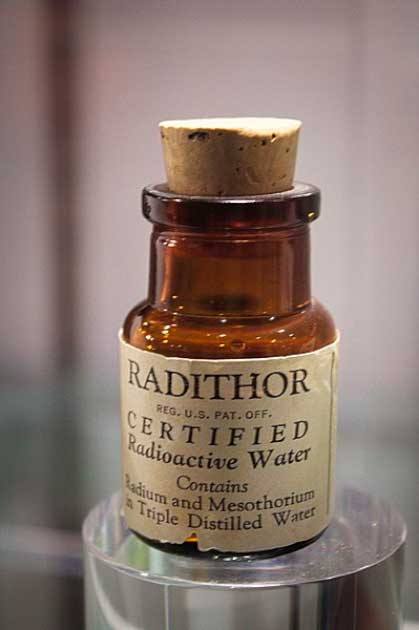Throughout medical history, treatments have involved the use of some strange ingredients where the cure seems almost as bad as the disease. Using raw meat on a bite from a rabid dog, treating syphilis with mercury, and radium to cure arthritis. Many treatments had indeed proved more deadly than helpful.
During the 19th and early 20th centuries, cure-all medicines were popular and accessible to everyone. With no restrictions in place, many medicines were made with dangerous ingredients such as alcohol, cocaine, morphine, opium, and chloroform.
Worse, children and babies were given these medications, and death was often an unfortunate side effect. But perhaps the most extreme ingredient that used to be fed to children was heroin. Used in cough medicine, it proved very popular for young children. But these were patent medicines; shouldn’t they have safe and approved ingredients?
Patent Medicines
Patent medicines date back to the 17th century, when a royal grant was issued to an applicant for them to sell medicine, known as a “patent”. A patent was granted if the royal didn’t die, or if they felt better after taking the medicine. These medicines were rarely made by medical doctors or pharmacists, and this was clearly a flawed system for identifying effective medication.
Patent medicine became very popular in the mid-19th and early 20th centuries due to pervasive advertising. Paper ads, free samples, toys, and coins could be exchanged for the medication, and many patent medicines proved very successful even though they had no curative properties.
This might have been something to do with the other ingredients. Patent medicines typically contained a large percentage of grain alcohol, often combined with highly addictive drugs, and even radioactive ingredients. People believed these medications worked because of the effects of the drugs and alcohol.

Consumer protection acts were made because of the addictions and deaths caused by patent medicine. Listing every ingredient used in the medicine on the package became a requirement. Before, prescriptions were not required to state if they contained dangerous ingredients in the bottle.
Medicine Shows and “Indian Sagwa”
Many medicine salesmen selling patent medicines would perform traveling medicine shows. These shows told stories about how their medicine came from foreign lands. Sellers would talk about the effectiveness of their medicine.
- The Poison Squad Trials: Do You Know What’s In Your Food?
- Dead Stoned: Why Was This Man Buried in a Shroud of Marijuana?
This was done by having plants, people who would sit in the audience and say how it “cured” them. One of the most successful medicine shows which worked in this fashion was the “Kickapoo Indian Medicine Company”.
These shows employed many Native Americans or other indigenous peoples as spokesmen. They would dress in traditional outfits, give a “prayer” in their native languages, and dance.
Obviously this was generally fakery, and often there were no Kickapoo people in the shows, the company even going so far as to hire an Irish man to perform as an Indian. Their product, the exotically named “Kickapoo Indian Sagwa” was said to purify the blood and cure all diseases of the digestive system.
It was a powerful laxative made from herbs, roots, and often bark. The company was endorsed by the American soldier and cowboy Buffalo Bill Cody. Cody claimed that “Kickapoo Indian Sagwa is the only remedy the Indians ever use, and has been known to them for ages. An Indian would soon be without his horse, gun, or blanket as without Sagwa.”
Nasty Cough? How About Some Heroin…
Many patent medicines were advertised to be for soothing or treating a sick baby or young child. These serums or syrups helped ease teething pain, calm down a fussy baby, or treat a baby’s cough, asthma, pneumonia, and bronchitis.
Heroin cough medicines and heroin cough drops were also used for older children and adults. After taking the medication, the heroin would slow the breathing, and the cough would stop. Of course, that wasn’t all it did.
Heroin was created by a chemist from London who had experimented with mixing morphine and acids. He abandoned the creation because it wasn’t what he intended to make, and he had no reason to use it. However, about 20 years later, a chemist working for Bayer Corp. recreated the substance, and found ti to be an incredibly potent form of morphine. Bayer Corp is the same company that made and still makes aspirin today.
Bayer Corp advertised the drug as a “safe substitute for morphine” that was non-addictive and treated coughs. Heroin is, I think we can all agree, not in fact safer than morphine. Heroin is rapidly metabolized into a form of morphine which is stronger and faster-acting.

Once the company learned about the risks, dangers, and deaths, it stopped producing it in 1910. Alongside the bottles of heroin the Bayer Corp made, there were other heroin-based cough medicines. Two well-known examples are laudanum and Mrs. Winslow’s Soothing Syrup.
Laudanum is an opium tincture that contains opium powder, codeine powder, and alcohol. The medication was incredibly addictive, and many housewives would give it to their babies or drink it themselves to “relax.” Many other patent medicines contained laudanum in them as well.
The effects of laudanum include euphoria, sedation, constipation, and slower respiration. Today laudanum is used in hospitals for treating severe diarrhea, and for babies born with Opioid Withdrawal Syndrome, but this is under strict supervision and the idea that laudanum could be self-medicated is long gone.
Mrs. Winslow’s Deadly Syrup
Mrs. Winslow’s Soothing Syrup was used for teething, fussy, and coughing babies. This syrup had 65mg per ounce of morphine or heroin and alcohol. The syrup was recommended to be taken at high dosages. Alarmingly, a teaspoon of syrup contained enough heroin or morphine to easily kill even an older child.
The medication seemed to be effective but killed enough infants to earn the nickname “the baby killer”. The heroin or morphine would slow down the baby’s breathing and cause the coughing to stop. It also made babies fall asleep quickly, but sadly many babies were given the soothing syrup to help them sleep and never woke up.
Parents often did not know that these medicines contained heroin or were addictive. Many heroin cough medicines were advertised to be safe and harmless, and it was good to give to children and babies. It is estimated that several thousand babies were given heroin cough medicine and died.
Products like heroin cough syrup are no longer made thanks to federal regulations in the United States, and similar legislation in other countries. Some patent medicines still exist today without harmful ingredients. Sodas like 7 Up, Coca-Cola, and Dr. Pepper were all originally patent medicines.

7 Up was made with lithium citrate, which was used as a mood-stabilizing drug. Coca-Cola contained cocaine which was said to cure impotence and morphine addictions. Dr. Pepper did not have any harmful ingredients but was sold as a medicine anyway to help with digestion and claimed to “restore vim, vigor, and vitality.”
Other well-known products we use today that were once patent medicines include Phillips’ Milk of Magnesia, tonic water, grape-nuts, Kellogg’s Corn Flakes, Vicks VapoRub and even Lithia Spring Water. Happily, none of them currently contain the dangerous ingredients which they once did.
These addictive and dangerous concoctions that were given to children influenced modern medical advancements. Today doctors know what medication will treat their patients. The use of cure-all medications is no longer standard practice. These cure-alls tended to cure nothing.
Top Image: Mrs. Winslow’s Cough Syrup advertised for children, but the patent medicine could contain a fatal dose of heroin (Miami U. Libraries / Public Domain)
By Lauren Dillon